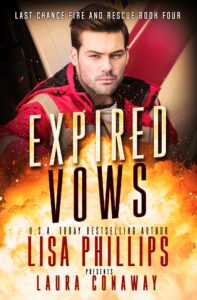By Lisa Phillips, @LisaPhillipsbks
Back in my career, I felt like it was hard to grasp what parts of craft I was good at and what I wasn’t so strong on. These days, I just try to learn as much as I can. I figure if I often look for ways to learn, and areas where I can gather more skills I’ll continue to level up as an author.
Here are 3 things to think about when you’re editing the dialogue in your novel.
- Dialogue should be true to the character.
I often work on the assumption that the author has done the background work on their character. That you’ve worked through the Story Equation and figured out the SEQ. If you haven’t, take some time before you jump into novel revisions to ask yourself who this person is.
How do they see themselves?
How do they think others see them?
These opinions or beliefs color how they act. Your character operates through the lens of what they believe. They say what they say, and do what they do, as a result of pre-formed opinions. So if you’ve written your book while you were still discovering who the character was, you may need to revise it in light of what you now know about this character and the “before,” the “mirror moment,” and the “after” of their internal arc.
Does your dialogue ring true to the character?
If we stripped the narrative, action beats and attributions, and left only your dialogue…could we still tell who is talking? The goal is dialogue that could only have been spoken by THAT character at that moment.
- Motivation –what’s the power play?
Secular writing craft advice falls back on what the character wants. They rely on the inherent selfishness in all of us, the fact everyone has some form of an agenda, and focus on what the character is after.
Knowing their goal is necessary.
But if you stop there, you miss the deeper need in the character—that soul deep hunger for something “more” than a simple “want” will give them.
Why is your character so determined to find success?
What is at stake if they don’t get it?

A young mother with a missing child speaks differently when asking for help to find that baby than that same young mother would in the grocery store asking for help to find her wallet. In both instances something important is lost, but the stakes of one scenario are far greater than the other. The impact of not finding the baby far outweighs the loss of a wallet.
Does your dialogue convey the stakes?
When you layer the emotion and the stakes into both what the character says and how they say it—and any accompanying action beats—the result is better dialogue.
- What are they not saying?
Subtext is the missing component in too many novels. The emotional undercurrent in your story is what connects your reader to what is happening on the page. Similarly with dialogue, what the character ISN’T saying is often more powerful than the words coming out of their mouth.
If we think about relationships, and what we can glean from books like Love and Respect, we see that often two people can talk but they are speaking two different languages. Two people in a relationship are looking for different things, they base their reactions on whether that need is being met or not. So in subtext we’re thinking about what the character is trying to say, and how they convey that in their flawed human way.
What is the need the speaking character is looking to be met?
Where is the conflict in the relationship between the two speaking characters?
How can you take who has the power in the relationship, and flip it? Can one character take from the other, or give power to them in the situation? How would this change things? How can your character show the truth of who they are—or want to be—in a simple conversation?
Any scene that fails to move the story along, or any dialogue exchange that seems simple (or boring) can be layered with subtext that will deepen it. A gesture. A comment. Simple elements can add something extra to the page that can capture your readers.
Which is the goal of all our stories.
Does your dialogue leave something left unsaid?
Layering moments of meaningful silence, or showing the reader what’s under the surface with this character are tools you can use to elevate any scene from the same-old/same-old readers see every day…to something brilliant.
She sees the promise of freedom. He vowed to always be the hero.
EMT Trace Bently came back to Last Chance County to escape his past. After the loss of his wife, he gave up a promising career as a police officer for the chance to save lives every day as part of the Fire Department. When a hostage situation demands the help of a local counselor, Trace realizes the past he left behind has found him. He’s being given a second chance to save the life of someone he cares about.
If he can face the grief he buried.
Family Counselor Kelsey Scott has to secure this grant or admit failure. She can’t afford to lose any more pieces of the life she wants because of her own choices. When Kelsey becomes the target of a series of dangerous attacks, Trace steps in determined to protect his wife’s best friend. This hero breaks down all her resistance, but Kelsey can’t risk her own heart.
Even if it’s what will set them both free.
USA Today and top ten Publishers Weekly bestselling author Lisa Phillips is a British ex-pat who grew up an hour outside of London. Lisa attended Calvary Chapel Bible College, where she met her husband. It wasn’t until her Bible College graduation that she figured out she was a writer (someone told her). Since then she’s discovered a penchant for high-stakes stories of mayhem and disaster where you can find made-for-each-other love that always ends in happily ever after.
Find out more at www.authorlisaphillips.com



